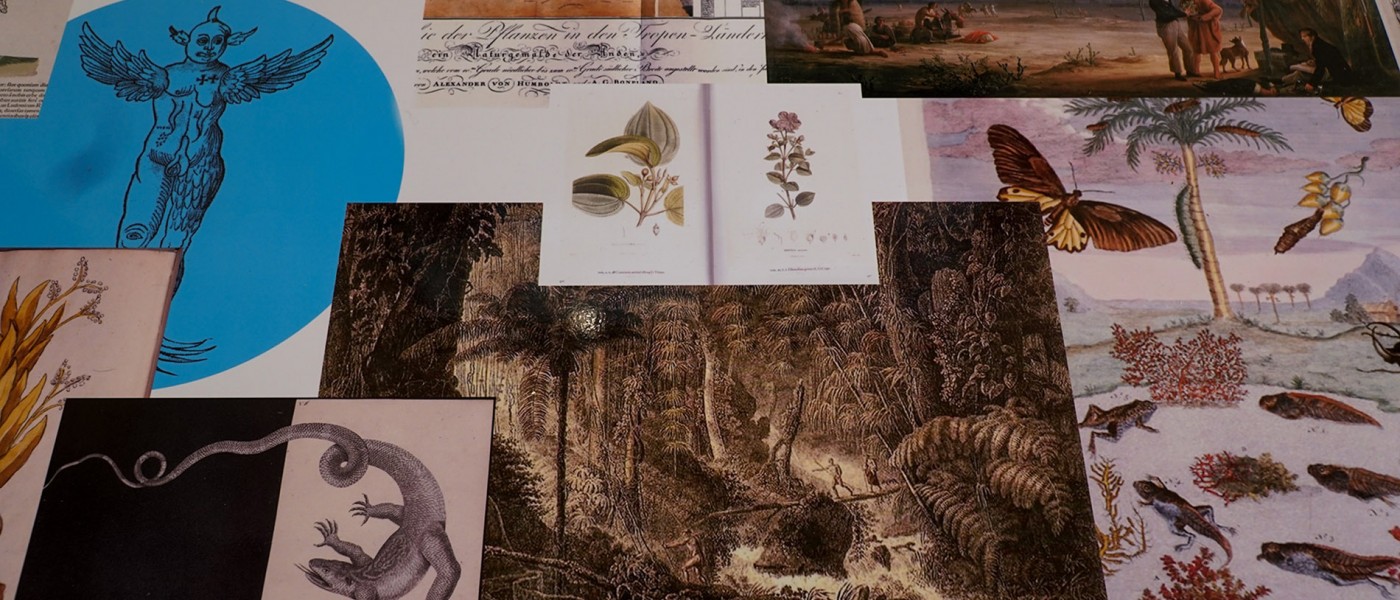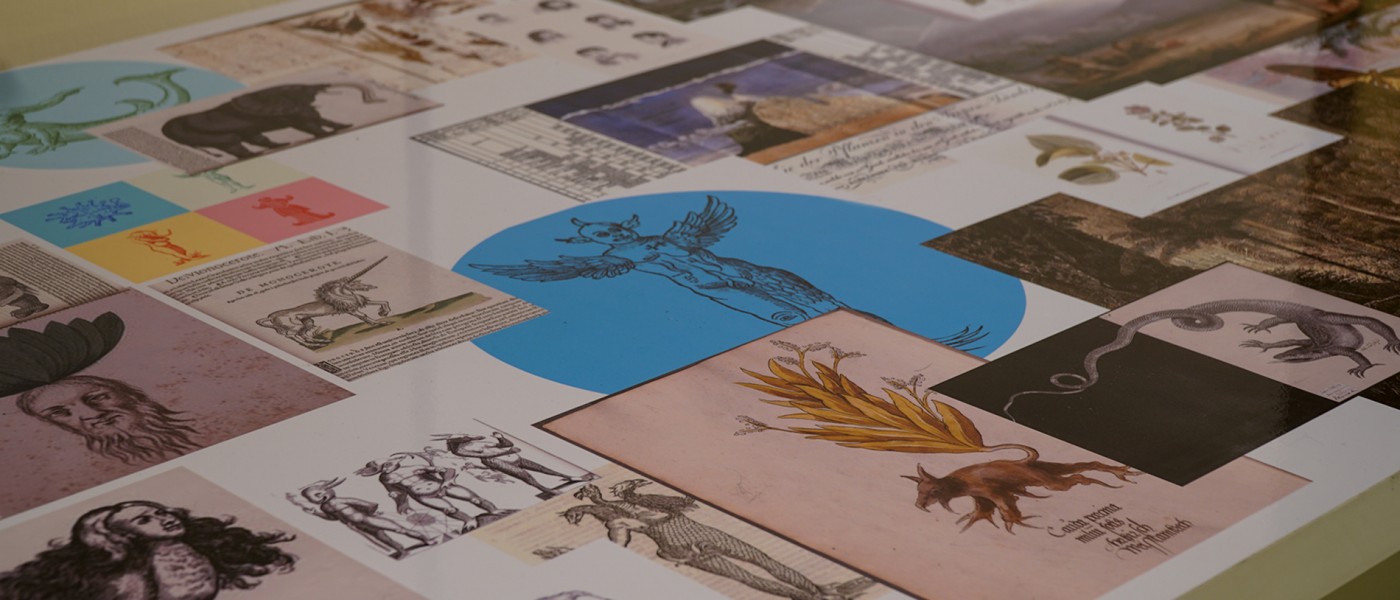"Nature is but one," says Pablo La Padula, "but the image we have of it changes dramatically with the passage of time and space. There is only a simple bifocal dialectic lens which separates nature in its original organic state from contemporary Victorian neomechanical interpretations. La Padula, with the technical collaboration of Leo Núñez, interferes with the story told by the Museum of the End of the World (MFM for its acronym in Spanish) with a "talking table" on which, in the artist's own words, " a compendium of constructions overflows with interpretations of the natural world, from the most impassioned visions of Pliny the Elder (AD 23–79) to the enthusiastic transgenic animals of high modernism."
This is a "vast collage of the construction of a scientific perspective, where all the drawings belong to the field of natural philosophy, in the best sense of the word." The table-collage "narrates an anachronistic version of natural history relating to the biological fine arts, as if this were taking place in a visual universe parallel to the one of Fine Arts as we know them."
This table, which stands in the heart of the MFM, "opens its interactivity to embrace the look and feel of the images, which, through a sensor, articulate short stories as told to a bold user who has nonetheless been taught not to touch the exhibits in a museum." There are acrylic-painted tondos on the table in translucent tones, covered in fantastic drawings which intrude into the vision and the story told by the "natural history of the region," carefully assembled and displayed in the Museum's showcases along the walls. Using a range of diverse resources −some from the laboratory, others from a collection of natural materials, while others hail from scientific imagination and literature − La Padula builds something which takes on the form of a multifaceted installation. In it, the talking table, the tondos and the video combine to deactivate the more conventional ways of reading in order to reference surprising links between the past and present of man's scientific imagination.
The materials are handled in a logical system of assembly, lighting and organization that places the viewer in the disturbing place of having to decipher the clues hidden among the pieces. The viewer is thus placed virtually in the shoes of the scientist, face-to-face with the invitation to consider a hypothesis of interpretation that will allow them to enter this singular world, one caught between art and science, between matter and imagination.
A perspective that builds a world
Km: 3101
Venue: Museo del Fin del Mundo - Casa Fundacional (ex Banco Nación)
Address : Maipú 173
City : Ushuaia
Argentina
Artist(s):
Pablo La Padula (ARG)
Curatorship:
BIENALSUR (ARG) ,
BIENALSUR, Diana B. Wechsler (ARG)
Type(s):
Exhibition
From 2019/05/19
To 2019/10/08


